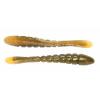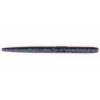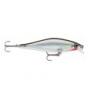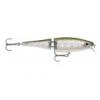SMALLMOUTH BASS
How to identify a Smallmouth Bass
The smallmouth is easily distinguished from the largemouth by its clearly connected dorsal fins, the scales on the base portion of the soft-rayed second dorsal fin, and the upper jaw bone which extends only to about the middle of the eye. The coloration is also distinctive being usually more brownish in the smallmouth and more greenish in the largemouth.
Generally, the smallmouth has bars radiating back from the eyes, and though similar bars may be present in individuals of other species, including the largemouth, they seem to be more prominent and more consistently present in the smallmouth. A smallmouth's eyes are red or orangish. In young smallmouths, there is a distinctive band of orange at the base of the tail. This is followed by a black band with the tip of the tail being either white or yellow.
Where to catch Smallmouth Bass
The smallmouth bass is native to the eastern half of the U.S.A. and southeastern Canada, from Manitoba and Quebec south to the Tennessee River system in Alabama and west to eastern Oklahoma. It has been widely transplanted so that today it occurs in almost every state and many other countries. It is not as widespread as the largemouth bass.
They prefer deeper water than the largemouth and areas of clear, fast-flowing streams and pools with gravel/rubble bottom. In waters coinhabited by both smallmouth and largemouth, the largemouth bass will spawn a little earlier due to the fact that the shallower nesting sites they choose in protected areas with emergent vegetation warm to the optimum temperature sooner that the deeper, rockier sites chosen by the smallmouths.
IDENTIFICATION
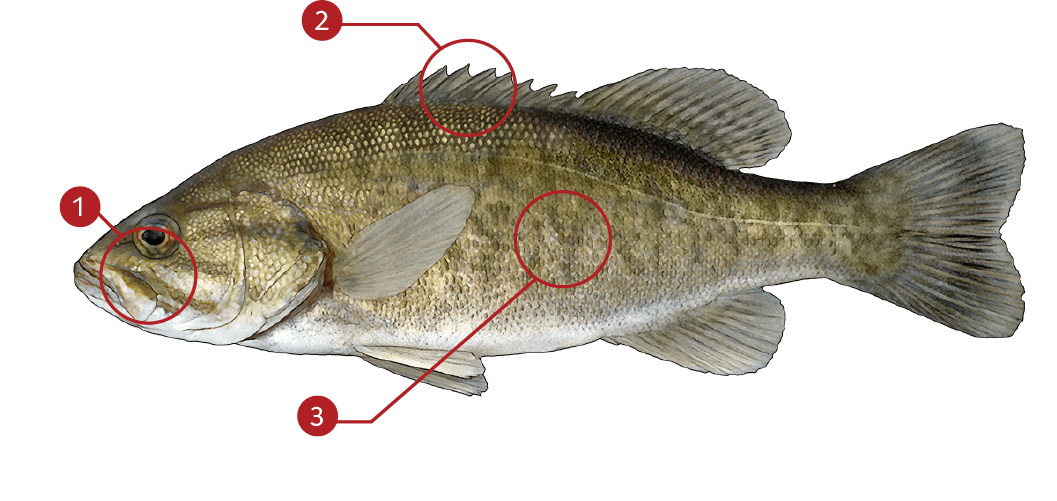
| |
Upper jaw extends to the middle of the eye |
| |
Thirteen to fifteen dorsal fin spins |
| |
Dark brown vertical bands |
TARGET AREAS
|
|
Acknowledgements: We thank TAKEMEFISHING.org (www.takemefishing.org), Wisconsin Department of Natural Resources for their contributions to these FISH FACTS.


